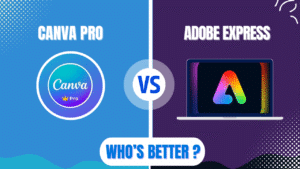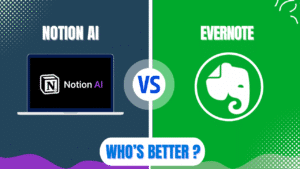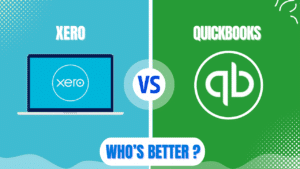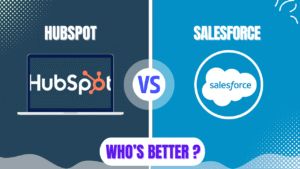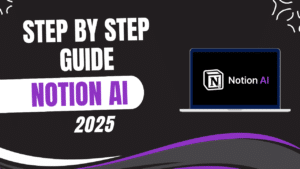WordPress is the better choice for most users in 2025. Its unmatched flexibility, massive plugin ecosystem, and lower total cost make it the superior option for everything from simple blogs to complex e-commerce sites. While Webflow offers excellent design capabilities for professionals, WordPress delivers better overall value with easier maintenance and wider developer support.
Key Differences Between Webflow and WordPress
WordPress powers over 43% of all websites on the internet for good reason. It combines unparalleled flexibility with a robust ecosystem of plugins and themes. Webflow delivers exceptional design control but at higher costs with a steeper learning curve.

Your choice ultimately depends on specific needs. Design professionals often prefer Webflow for its visual development approach. Most other users benefit from WordPress’s extensive support network and lower long-term costs.
Here’s how they compare directly:
- Cost: WordPress wins with lower ongoing expenses and no restrictive plan limitations
- Ease of Use: Webflow for designers, WordPress for everyone else
- Design Flexibility: Webflow offers superior visual design control
- Customization: WordPress provides deeper functional customization through plugins
- Scalability: WordPress handles growth better with flexible hosting options
- Maintenance: WordPress requires more active management but offers more control
- SEO: Both perform well, with WordPress having a slight edge through plugins
- Performance: Webflow delivers faster out-of-box speed, WordPress requires optimization
Let’s examine both platforms in detail to determine which fits your specific needs.
Comprehensive Comparison Table
| Feature | WordPress | Webflow |
|---|---|---|
| Pricing Structure | Free software + hosting costs | Subscription-based SaaS |
| Starting Cost | ~$3-10/month (hosting) | $14/month (basic site plan) |
| Ease of Use | Varied learning curve | Steeper learning curve |
| Visual Design Control | Moderate to high with page builders | Exceptional visual precision |
| Customization | Extensive via 59,000+ plugins | Limited to Webflow features |
| Content Management | Robust built-in CMS | Good but with collection limits |
| E-commerce | Through plugins (WooCommerce) | Native but expensive ($29-$212/month) |
| Maintenance | Regular updates needed | Managed by Webflow |
| Performance | Variable, requires optimization | Consistently fast |
| Security | Requires vigilance | Managed by Webflow |
| SEO Capabilities | Excellent via plugins | Very good native features |
| Community Support | Massive (forums, tutorials) | Growing but smaller |
| Best For | Most users, especially blogs, business sites, and complex web applications | Designers, agencies, and design-focused businesses |
Pricing Comparison
WordPress Pricing
| Component | Cost | Notes |
|---|---|---|
| WordPress Software | $0 | Free and open-source |
| Domain Name | $10-15/year | Required for both platforms |
| Web Hosting | $3-200/month | Shared ($3-10), VPS ($20-80), Dedicated ($100-200) |
| Premium Themes | $0-100 (one-time) | Thousands of free options available |
| Premium Plugins | $0-50/month | Many free alternatives exist |
| Developer Costs | Variable | If needed for customization |
| Annual Cost (Basic) | ~$50-150/year | Small site with shared hosting |
| Annual Cost (Business) | ~$300-1,000/year | Medium business site with premium plugins |

Webflow Pricing
| Plan | Cost | Limitations |
|---|---|---|
| Basic | $14/month | 50GB bandwidth, no CMS |
| CMS | $23/month | 100k CMS items, 100GB bandwidth |
| Business | $39/month | 250k CMS items, 250GB bandwidth |
| Enterprise | Custom | Unlimited CMS items |
| Ecommerce (Standard) | $29/month + 2% fee | 500 items, $50k yearly sales |
| Ecommerce (Plus) | $74/month + 0% fee | 1,000 items, $200k yearly sales |
| Ecommerce (Advanced) | $212/month + 0% fee | 3,000 items, unlimited sales |
| Annual Cost (Basic) | $168/year | Site without CMS features |
| Annual Cost (Business) | $468/year | Site with CMS needs |
| Annual Cost (E-commerce) | $348-2,544/year | Online store |

User Experience & Learning Curve
WordPress User Experience
WordPress offers multiple interfaces depending on your approach:
- Classic Admin Dashboard: Text-based interface for content management
- Block Editor (Gutenberg): Modern block-based editing
- Page Builders: Visual drag-and-drop interfaces (Elementor, Divi, etc.)
New users can create basic sites quickly with minimal technical knowledge. The admin interface is intuitive for content management, though theme customization often requires learning specific tools.
WordPress’s flexibility comes with complexity. Users must navigate:
- Theme selection and customization
- Plugin management
- Updates and maintenance
- Hosting configuration
This complexity increases with site sophistication but allows for precise control over your site.
Webflow User Experience
Webflow provides a professional-grade design interface that resembles tools like Adobe XD or Figma:
- Designer: Visual canvas for precise element placement
- CMS Panel: Structured content management system
- Editor: Simplified interface for content updates
Webflow requires understanding web design principles. Its visual interface offers pixel-perfect control but demands more design knowledge than typical website builders.
Users report spending 10-20 hours mastering Webflow basics—significantly more than WordPress with a page builder. However, designers find this investment worthwhile for the creative control it provides.
The platform removes technical maintenance concerns while adding design complexity. This tradeoff appeals to visual creators but can frustrate those seeking simpler solutions.
Design & Customization Capabilities
WordPress Design Capabilities
WordPress design flexibility varies by approach:
With Default Themes:
- Good but limited customization options
- Theme-dependent design controls
- Basic layouts and formatting
With Page Builders:
- Drag-and-drop visual design
- Extensive pre-built templates
- Responsive design controls
- Visual effects and animations
Popular page builders like Elementor, Divi, and Beaver Builder transform WordPress into visual design tools. These add-ons deliver much of Webflow’s visual control while maintaining WordPress’s flexibility.
WordPress supports virtually any design, though the process may require combining multiple tools. The result can be highly customized sites that match specific brand requirements.
Webflow Design Capabilities
Webflow excels at visual design with professional-grade controls:
- Precise positioning and spacing
- Advanced animations and interactions
- Fine-tuned responsive behavior
- Class-based styling system similar to CSS
The platform combines visual design with proper code structure. This approach gives designers direct control without requiring hand-coding.
Webflow’s class system helps maintain design consistency across sites. Designers can create style systems that flow through entire projects, ensuring visual cohesion.
The platform’s animation capabilities stand out, enabling complex interactions without custom code. This makes Webflow particularly strong for creating interactive portfolios and experience-focused websites.
Content Management System (CMS)
WordPress CMS
WordPress began as a blogging platform, so content management is in its DNA:
- Unlimited posts, pages, and custom post types
- Hierarchical categories and tags
- Custom fields and metadata
- Media library with image optimization
- User roles and permissions
- Content scheduling and revision history
The system handles everything from simple blogs to complex content structures. WordPress doesn’t impose limits on content volumes, making it ideal for content-heavy sites.
Custom post types allow for specialized content like products, events, or team members. This flexibility supports diverse content strategies across industries.
Webflow CMS
Webflow’s CMS offers structured content management with visual design integration:
- Collection-based content organization
- Visual content modeling
- Dynamic content displays
- Built-in search capabilities
- Content API access
The platform excels at creating visually rich, database-driven websites. Designers can build complex template systems that pull content from structured collections.

However, Webflow imposes limits based on your plan:
- 100 to 10,000 collection items depending on plan
- 2,000 to 10,000 static pages depending on plan
- Storage limitations from 50GB to 250GB
These constraints can affect content-heavy sites, especially as they grow. Larger sites may face increased costs as they reach collection limits.
E-commerce Capabilities
WordPress E-commerce
WordPress handles e-commerce through plugins, most notably WooCommerce:
- WooCommerce powers 29% of all online stores
- One-time setup with ongoing hosting costs
- No transaction fees beyond payment processors
- Unlimited products and categories
- Extensive payment gateway options
- Complete customization of checkout process
- Advanced shipping and tax rules
WooCommerce scales from small shops to enterprise stores processing millions in revenue. The plugin ecosystem extends functionality to subscription products, memberships, bookings, and more.
The platform’s open nature allows for deep customization of the shopping experience. Store owners can modify every aspect of their shop, though this sometimes requires development expertise.
Webflow E-commerce
Webflow offers native e-commerce with strong visual design integration:
- Visually designed product pages
- Custom checkout flow design
- Digital and physical products
- Basic tax and shipping rules
- Limited payment processors (Stripe)
- Product variants and categories
Webflow E-commerce plans range from $29 to $212 monthly with potentially added transaction fees. These plans include product limits (500 to 3,000 items) and sales volume caps on lower tiers.
The platform’s strength lies in creating visually distinctive shopping experiences. However, it lacks the advanced features of dedicated e-commerce platforms without additional tools.
SEO Capabilities
WordPress SEO
WordPress provides a solid SEO foundation enhanced by plugins:
- SEO plugins like Yoast, Rank Math, or SEO Press
- Complete control over meta tags and descriptions
- XML sitemap generation
- Content analysis tools
- Schema markup implementation
- Redirect management
- Advanced technical SEO controls
These tools make WordPress highly competitive for search optimization. Users can implement virtually any SEO strategy through the platform’s flexible structure.
The ability to customize server configurations (with appropriate hosting) adds further optimization potential. This includes server-level caching, GZIP compression, and other performance enhancers that benefit SEO.
Webflow SEO
Webflow includes strong built-in SEO features:
- Clean code structure
- Customizable meta tags
- Automatic sitemap generation
- 301 redirects
- Robots.txt control
- Alt text for images
- Schema markup options
The platform’s clean code and fast loading times provide excellent SEO foundations. These technical advantages often result in good performance in search rankings.

However, Webflow lacks the deep analysis and recommendation tools available in WordPress SEO plugins. Advanced users may miss these guidance features when optimizing content.
Performance & Speed
WordPress Performance
WordPress performance varies widely based on:
- Hosting quality
- Theme optimization
- Plugin selection
- Caching implementation
- Image optimization
- Database efficiency
Unoptimized WordPress sites often suffer from slow loading times. However, properly optimized installations can achieve excellent speed scores rivaling any platform.
Performance optimization typically requires:
- Quality hosting (WP Engine, Kinsta, SiteGround)
- Caching plugins (WP Rocket, W3 Total Cache)
- Image optimization (Imagify, ShortPixel)
- Database cleanup routines
- CDN implementation (Cloudflare, BunnyCDN)
When properly configured, WordPress sites can achieve sub-second loading times and high performance scores.
Webflow Performance
Webflow delivers consistent performance advantages:
- Optimized hosting infrastructure
- Global CDN included
- Automatic image optimization
- Efficient code output
- Server-side rendering
- HTTP/2 and SSL by default
Sites typically achieve good speed scores without additional optimization. This “performance by default” appeals to users who prefer not to handle technical optimizations.
Webflow’s proprietary hosting infrastructure ensures consistent performance across all sites on the platform. This reliability represents a significant advantage for users who prioritize speed without technical involvement.
Maintenance & Security
WordPress Maintenance
WordPress requires regular maintenance:
- Core software updates (every 2-3 months)
- Theme updates
- Plugin updates
- Database optimization
- Security monitoring
- Backup management
This ongoing maintenance demands attention or outsourcing to management services. Neglected WordPress sites become vulnerable to security issues and performance degradation.
Many hosting providers now offer managed WordPress services that handle much of this work automatically. These services add cost but reduce the maintenance burden significantly.
Webflow Maintenance
Webflow eliminates most maintenance concerns:
- Platform updates handled automatically
- Security managed by Webflow
- Backups included in all plans
- No plugin management required
- Consistent performance without optimization
This hands-off approach appeals to users who prefer focusing on content and design rather than technical maintenance. The trade-off is less control over the underlying technology.
Webflow’s closed system prevents many common security issues that affect WordPress. This protection comes at the cost of flexibility but delivers peace of mind for security-conscious users.
Plugin Ecosystem & Extensibility
WordPress Extensibility
WordPress boasts an unmatched ecosystem:
- 59,000+ free plugins in the official directory
- Thousands more premium plugins
- Solutions for virtually any functionality
- Deep customization through hooks and filters
- Custom code integration
- API access for external connections
This extensibility makes WordPress suitable for nearly any web project. From simple contact forms to complex membership sites, plugins exist to enable most functionality.
The platform’s open architecture allows developers to modify core behavior through hooks and filters. This flexibility enables highly specialized solutions without modifying the core code.
Webflow Extensibility
Webflow offers more limited extensibility:
- Custom code embedding
- API for content access
- Zapier integration
- Limited third-party integrations
- Script placement in page headers/footers
The platform restricts deep system modifications, focusing instead on its visual design strengths. Users must work within Webflow’s provided feature set, with custom code limited to front-end enhancements.
This approach ensures stability but limits complex functionality. Projects requiring specialized features may need external tools connected through APIs.
Real-World Use Cases
Best Uses for WordPress
WordPress excels for:
Content-Heavy Websites
- News sites and magazines
- Blogs with large archives
- Educational resources
- Documentation sites
Complex Functionality Requirements
- Membership sites
- Online communities
- Learning management systems
- Directory listings
E-commerce at Any Scale
- Small shops to enterprise stores
- Subscription products
- Digital downloads
- Marketplaces
Budget-Conscious Projects
- Small business websites
- Personal portfolios
- Non-profit organizations
- Community groups
Best Uses for Webflow
Webflow shines for:
Design-Focused Projects
- Creative agency websites
- Visual portfolios
- Interactive landing pages
- Brand-focused microsites
Visual Storytelling
- Case studies
- Product showcases
- Visual narratives
- Interactive presentations
Mid-Size Business Sites
- Service businesses
- Professional firms
- Restaurants and local businesses
- Startups with design focus
Teams with Design Expertise
- Marketing agencies
- Design studios
- Front-end developers
- UX professionals
FAQ: Common Questions About WordPress vs Webflow
Q: Can I migrate from WordPress to Webflow or vice versa?
A: Yes, but with limitations. Content transfers relatively easily, but designs and functionality often require rebuilding. Webflow offers a WordPress importer for basic content migration. Moving from Webflow to WordPress typically requires manual recreation of designs.
Q: Which platform is better for SEO?
A: Both can achieve excellent SEO results. WordPress offers more detailed control through plugins like Yoast SEO. Webflow provides strong technical SEO foundations with clean code and fast loading times.
Q: How do costs compare for a growing business website?
A: WordPress typically remains more cost-effective as sites grow. Webflow costs increase with traffic, collection items, and features. A business site with moderate traffic might cost $200-300 annually on WordPress but $468+ on Webflow.
Q: Can I build an e-commerce store on either platform?
A: Yes. WordPress uses WooCommerce with unlimited products for a one-time setup cost. Webflow’s e-commerce plans range from $29-212 monthly with product limits (500-3,000) and potential transaction fees.
Q: Which has better customer support?
A: Webflow offers direct support through tickets and limited chat. WordPress support varies by hosting provider and theme/plugin developers. Many managed WordPress hosts provide excellent support, while Webflow’s support comes directly from the platform team.
Making Your Decision
When choosing between WordPress and Webflow, consider these critical factors:
- Budget – WordPress offers lower long-term costs for most projects
- Design priorities – Webflow excels for visual design precision
- Technical comfort – WordPress requires more technical management
- Growth projections – WordPress scales more economically for content-heavy sites
- Customization needs – WordPress provides more functional flexibility
For most users, WordPress remains the better overall choice in 2025. Its combination of flexibility, extensive ecosystem, and cost-effectiveness serves most website needs from simple to complex.
Webflow represents an excellent alternative for design professionals and teams prioritizing visual precision. Its streamlined maintenance and professional-grade design tools justify the higher cost for visual-first projects.
Both platforms continue to evolve, with WordPress improving its visual editing capabilities and Webflow expanding its functionality. The gap between them narrows each year, offering better options regardless of your choice.

